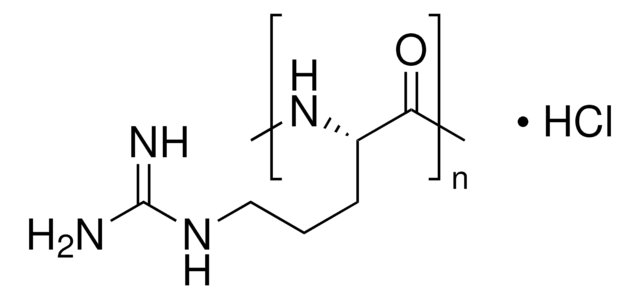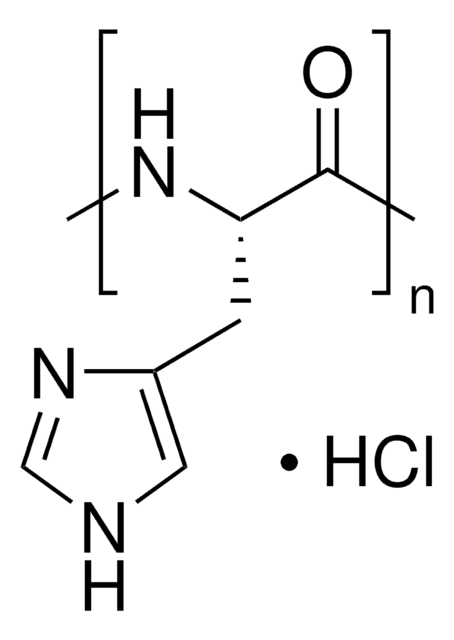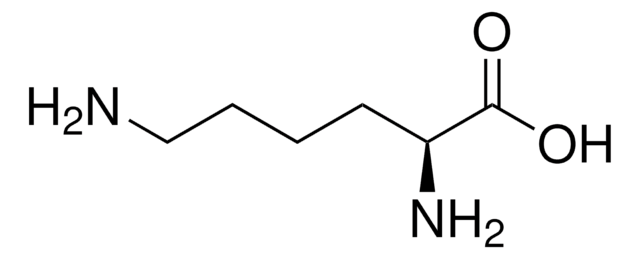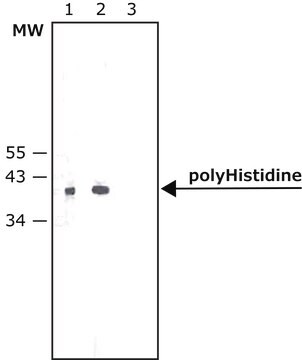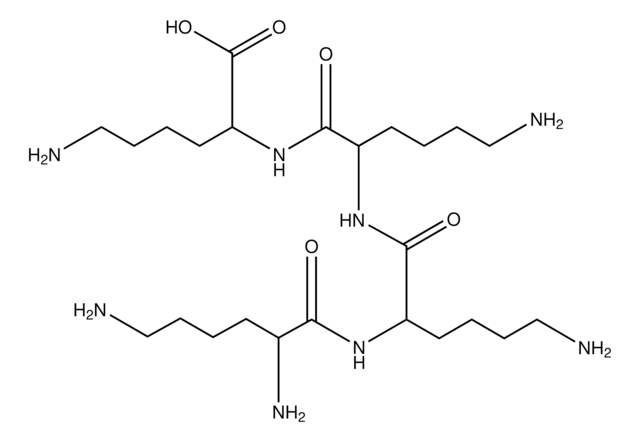P9386
Poly-L-histidine
mol wt 5,000-25,000
Synonyme(s) :
L-Histidine homopolymer
About This Item
Produits recommandés
Forme
powder or solid
Poids mol.
5,000-25,000
Couleur
white to light yellow
Application(s)
cell analysis
Température de stockage
−20°C
InChI
1S/C6H9N3O2/c7-5(6(10)11)1-4-2-8-3-9-4/h2-3,5H,1,7H2,(H,8,9)(H,10,11)/t5-/m0/s1
Clé InChI
HNDVDQJCIGZPNO-YFKPBYRVSA-N
Vous recherchez des produits similaires ? Visite Guide de comparaison des produits
Description générale
Application
- as a polycation for the dispersion of multi-wall carbon nanotubes (MWCNTs)
- as a polyionic compound to investigate its ability to rupture extracellular enveloped virus membrane
- in screening its anti-prion activity in cell based and in vivo anti-prion assay
Actions biochimiques/physiologiques
Remarque sur l'analyse
Autres remarques
Code de la classe de stockage
11 - Combustible Solids
Classe de danger pour l'eau (WGK)
WGK 3
Point d'éclair (°F)
Not applicable
Point d'éclair (°C)
Not applicable
Équipement de protection individuelle
Eyeshields, Gloves, type N95 (US)
Certificats d'analyse (COA)
Recherchez un Certificats d'analyse (COA) en saisissant le numéro de lot du produit. Les numéros de lot figurent sur l'étiquette du produit après les mots "Lot" ou "Batch".
Déjà en possession de ce produit ?
Retrouvez la documentation relative aux produits que vous avez récemment achetés dans la Bibliothèque de documents.
Les clients ont également consulté
Articles
Humankind has utilized protein materials throughout its existence, starting with the use of materials such as wool and silk for warmth and protection from the elements and continuing with the use of recombinant DNA techniques to synthesize proteins with unique and useful properties.
Notre équipe de scientifiques dispose d'une expérience dans tous les secteurs de la recherche, notamment en sciences de la vie, science des matériaux, synthèse chimique, chromatographie, analyse et dans de nombreux autres domaines..
Contacter notre Service technique